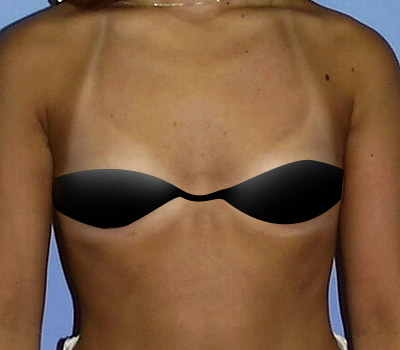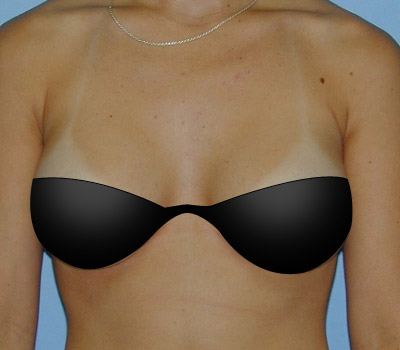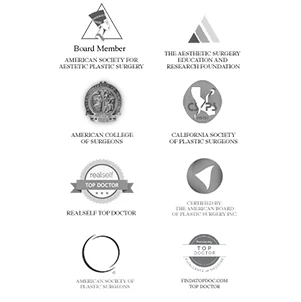Breast Augmentation
What Is Breast Augmentation?
Breast augmentation is a cosmetic procedure designed to add fullness and volume to the breasts, leading to a more attractive and proportional appearance. The effectiveness of this treatment is one of the reasons why breast augmentation and enlargement with implants is one of the most popular aesthetic surgical procedures in the United States. New techniques, along with innovations in the types of breast implants being developed, continue to improve upon this commonly performed breast enhancement option.
Orange County plastic surgeon Daniel C. Mills, MD, FACS is known for his expertise in breast augmentation procedures. In fact, he was part of a small group of plastic surgeons across America invited to participate in FDA clinical trials of the Cohesive Gel (Gummy Bear) breast implant, a newer type of silicone implant that can give patients an even more natural look and feel to the breasts. Dr. Mills also performs the TASPA (TransAxillary SubPectoral Augmentation) breast augmentation technique, a procedure that can result in minimal, even virtually unnoticeable, scarring.
If you are interested in breast augmentation, please continue reading the detailed information we have provided on this page, or contact Aesthetic Plastic Surgical Institute to schedule a consultation with Dr. Mills.
Breast Augmentation at a Glance
- Principle Benefits: Enhanced breast size and volume; improved symmetry and shape; a more proportionate and flattering bustline and physique
- Procedure Length: Generally one hour and 15 minutes at the longest (allow about four for pre- and postoperative care)
- Recovery: Regular activities can usually be continued within three to four days; more strenuous activities can typically resume after six weeks
- Sedation: General anesthesia
- Cost: Varies upon specifics of procedure
- Breast Augmentation Benefits
- Breast Implant Options
- Breast Augmentation Consultation
- TASPA Breast Augmentation
- Breast Augmentation Procedure
- Breast Augmentation Safety
- Breast Augmentation Recovery
- Breast Augmentation Cost
- Breast Augmentation Scars
- Breast Augmentation and Lift
- Dr. Daniel Mills – Breast Augmentation Surgeon
- Breast Augmentation FAQs
What Are the Benefits of Breast Augmentation?
Women consider breast augmentation for a number of reasons, from the desire to renew the breasts for a more youthful appearance to reconstructing the breasts after mastectomy. Some even wish to correct issues that have prevented the breasts from looking their best. Breast augmentation from our board-certified plastic surgeon can provide patients with a range of benefits. Implants can help:
- Restore lost breast volume after pregnancy, breastfeeding, or weight loss
- Increase breast size for those with small breasts
- Improve breast symmetry
- Improve breast shape
- Restore a youthful, sensual appearance to the breasts
- Make the bustline more proportionate to one’s body frame
- Rebuild the breasts as part of a breast reconstruction after mastectomy, lumpectomy, or injury
- Enhance one’s overall confidence and self-esteem
What Are My Breast Implant Options?
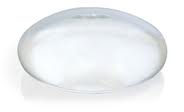 One of the most important decisions regarding your breast augmentation procedure is the type of implants that will be placed inside the breasts. Dr. Mills offers both traditional silicone and saline breast implants, as well as newer options such as IDEAL IMPLANT® structured saline implants and Gummy Bear (Cohesive Gel) implants. Each of these implant types can achieve excellent breast augmentation results for the right patients, and they will all be discussed in comprehensive detail at the time of the consultation to ensure the right decision is made. To learn more about your choices, please visit our page devoted to breast implants.
One of the most important decisions regarding your breast augmentation procedure is the type of implants that will be placed inside the breasts. Dr. Mills offers both traditional silicone and saline breast implants, as well as newer options such as IDEAL IMPLANT® structured saline implants and Gummy Bear (Cohesive Gel) implants. Each of these implant types can achieve excellent breast augmentation results for the right patients, and they will all be discussed in comprehensive detail at the time of the consultation to ensure the right decision is made. To learn more about your choices, please visit our page devoted to breast implants.
What Is the Breast Augmentation Consultation Like?
Dr. Mills will meet with you in an initial breast augmentation consultation to explain all aspects of the procedure with you, as well as answer your questions. At this meeting, Dr. Mills can show you a variety of sizes, shapes, and types of implants, and he will help you decide which is best for your ultimate goals. He will also give you an array of “breast sizers” that you can try on to gain an idea of how different sizes of implants will affect the way you fill out clothing and bathing suits. Lastly, Dr. Mills will go over the entire breast augmentation process with you to help you understand what you can expect and to address any concerns you may have.
TASPA Breast Augmentation
One of the concerns many patients have when considering breast augmentation is the extent of scarring after the procedure and exactly how visible the scars will be. Although there are many different incision techniques that Dr. Mills performs—including underneath the breasts and around the areola (the dark-pigmented region surrounding the nipple)—Dr. Mills prefers to use the TransAxillary SubPectoral Augmentation (TASPA) approach. This surgical technique involves a small incision made in the armpit. The breast implant will be placed through this incision and then positioned under the chest muscle behind the breast tissue. Dr. Mills has found that this technique allows for an even more natural-looking result, as well as minimal scarring that’s virtually undetectable since the incision is made in the armpit.
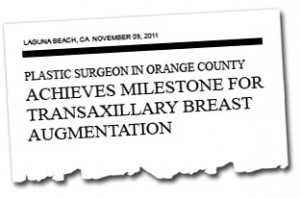 Dr. Mills has over 20 years of experience in performing transaxillary breast augmentation, a milestone recently chronicled in the Aesthetic Surgery Journal (ASJ) in an article titled, “Transaxillary Subpectoral Augmentation Mammaplasty: A Single Surgeon’s 20-Year Experience.” Click here to read the article.
Dr. Mills has over 20 years of experience in performing transaxillary breast augmentation, a milestone recently chronicled in the Aesthetic Surgery Journal (ASJ) in an article titled, “Transaxillary Subpectoral Augmentation Mammaplasty: A Single Surgeon’s 20-Year Experience.” Click here to read the article.
How Is the Breast Augmentation Procedure Performed?
The breast augmentation procedure will largely depend on the type of implants you select and the technique that will be utilized. If you decide to undergo the TASPA breast augmentation procedure, Dr. Mills will make a small incision in the armpit. Through this incision, he will then place the breast implant under the chest muscle in the breast. Once he has positioned the implant, the incisions will be closed.
Breast augmentation surgery can be performed under general anesthesia on an outpatient basis, and it usually takes about one hour and 15 minutes to complete.
How Safe Are Breast Implants?
Breast augmentation is generally considered a safe procedure when performed by a highly-qualified plastic surgeon like Dr. Mills. However, some health risks are associated with breast augmentation, pertaining to both the surgery and the implants themselves.
For one, you may be advised against breast augmentation if you are in poor health or suffering from a major illness, such as cancer or heart disease. In addition, if you are a cigarette smoker, you will be advised to refrain from smoking in the weeks preceding and following surgery.
Very rarely, women who undergo augmentation may believe they have developed a condition called breast implant illness (BII), which is characterized by soreness, headaches, fatigue, and skin-related issues, such as rashes. BII is not currently a diagnosable disease, as much research still needs to be done on the connection between these symptoms and breast implants; however, Dr. Mills is happy to perform breast revision if you are suffering from any such symptoms and wish to have your implants removed.
For patients with textured breast implants, there is also an exceedingly small chance of developing breast implant-associated anaplastic large cell lymphoma (BIA-ALCL), a type of cancer in the breast tissue surrounding the implant. Symptoms may include redness or rashes, lumps, fatigue, and abnormal weight loss. Although BIA-ALCL is a recognized medical concern, the FDA states that only 0.03% of patients with textured implants develop this condition.
While these are serious concerns, both are extremely uncommon. Dr. Mills will treat you with respect and compassion and welcome any questions as he examines your overall health during your consultation.
What Is Breast Augmentation Recovery Like?
After your breast augmentation procedure, you can expect some degree of swelling, bruising, numbness, and discomfort in the breast area. These side effects will likely be present for a few weeks after surgery; however, they can be alleviated with medication. You will also be fitted with a surgical bra that will be removed during one of your postoperative follow-up appointments with Dr. Mills. Patients can resume most daily activities within three to four days after the breast augmentation procedure, but Dr. Mills will advise you to avoid strenuous activities for about six weeks to allow the breasts to heal properly. You should continue to have mammograms after breast augmentation surgery. There may need to be a special type of mammogram performed so that radiographers can see around the implants for the most accurate results.
How Much Does Breast Augmentation Cost?
At our practice in Orange County, CA, pricing for breast augmentation includes fees for the plastic surgeon, operating facility, and anesthesia, as well as any pre- and postoperative vitamins and supplements. Since treatment is customized based on the unique needs and goals of the individual, the exact price of breast augmentation varies from patient to patient.
For those who wish to pay for treatment with financial assistance, Dr. Mills offers plastic surgery financing options through PatientFi™. Developed by some of the nation’s top plastic surgeons, PatientFi™ is designed to put the patient’s interests first. This agency is also known for its high approval rates and commitment to providing helpful loan management tools.
Will I Have Visible Breast Augmentation Scars?
One of the key benefits of Dr. Mills’ TASPA breast augmentation technique is that there is no visible scarring on the breasts themselves—the only surgical markings are tiny incision lines that typically blend with natural creases of the armpits. In the event a different technique is utilized, such as an incision around the areola or under the breast in the inframammary fold, Dr. Mills does everything in his power to ensure any potential scarring is as minimal as possible. This includes closing incisions with extreme delicacy, as well as instructing patients on how to properly tend to and protect their scars as they heal. Regardless of location, all breast augmentation scars can be concealed underneath most articles of clothing, and their appearance usually fades over time with proper care.
Breast Augmentation and Lift
In some instances, women may benefit from combining their augmentation with a breast lift—a procedure often referred to as an augmentation-mastopexy, breast augmentation with a lift, or a breast lift with implants. This is typically the case when a patient wishes to address moderate to significant breast sagging in addition to restoring or enhancing breast volume, as implants alone are not capable of markedly elevating the breasts on the chest wall. Only by removing excess skin and carefully recontouring tissue via breast lift surgery can the breasts be restored to a heightened, more youthful position.
Why Choose Dr. Mills as My Breast Augmentation Surgeon?
In addition to his monumental work in transaxillary breast augmentation and participation in the Gummy Bear implant trial, Dr. Mills is known throughout Orange County and beyond for his compassionate, easy-going nature. As the former President of the California Society of Plastic Surgeons and a past President of The Aesthetic Society®, he has been featured in several publications, and has traveled extensively to conduct research. He is certified by a number of distinguished boards and is a member of multiple notable medical affiliations.
Additional Breast Augmentation FAQs
Is breast augmentation painful?
Because breast augmentation includes the use of general anesthesia, you should experience little to no pain during the procedure itself. Patients often notice bruising, swelling, numbness, and/or discomfort during recovery, but these can typically be mitigated with over-the-counter medications.
What do breast implants feel like?
High-quality breast implants (such as those used by Dr. Mills) are designed to feel as natural as possible. The precise feel of the implants may depend on your particular amount of breast fat and tissue, as well as the type of implant placed (i.e. silicone vs. saline).
Can I breastfeed with implants?
Although many women are able to breastfeed after breast augmentation, this is not the case for every patient. In general, implants placed beneath the muscle and incisions made under the breast or through the armpit are less likely to interfere with milk production. It is also important to note that some women are naturally unable to breastfeed as is.
How can I reduce swelling after breast augmentation?
While swelling is a normal side effect and generally not cause for alarm, certain practices can potentially ease this effect. Specifically, be sure to wear your surgical bra as directed and follow your aftercare instructions for safe healing.
How long do breast implants last?
Modern breast implants are created with optimal longevity in mind, frequently staying intact for a decade or longer. That said, even the highest quality implants can sometimes undergo damage, from ruptures and leaks to capsular contracture (though the latter is much rarer). Women who experience these issues can be candidates for breast revision surgery, which involves the replacement and sometimes removal of breast implants.
In general, our team has found that implants do not leak unless they have been in place for six years or longer. Dr. Mills uses ultrasound technology to detect leaks and ruptures even more effectively than a mammogram. If you are a breast augmentation patient of Dr. Mills, you are welcome to undergo ultrasounds free of charge at our practice.
Breast augmentation and enlargement with implants can help you achieve your enhancement goals and give the breasts a fuller, more contoured appearance. To schedule a consultation with Dr. Mills, please contact our practice online or by telephone today. If you would like information on body contouring, facial rejuvenation, and the many other treatments available from Dr. Mills, please visit our main website at www.danmillsmd.com.
*Individual Results May Vary

